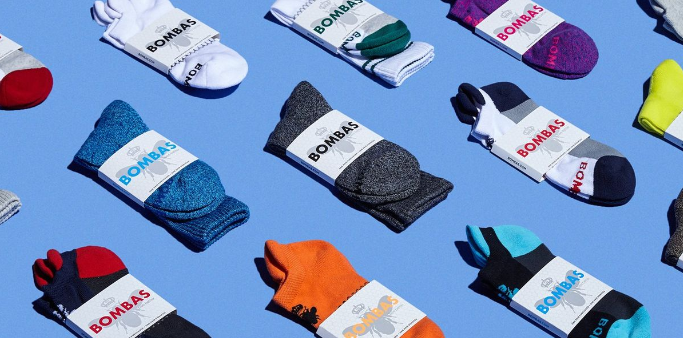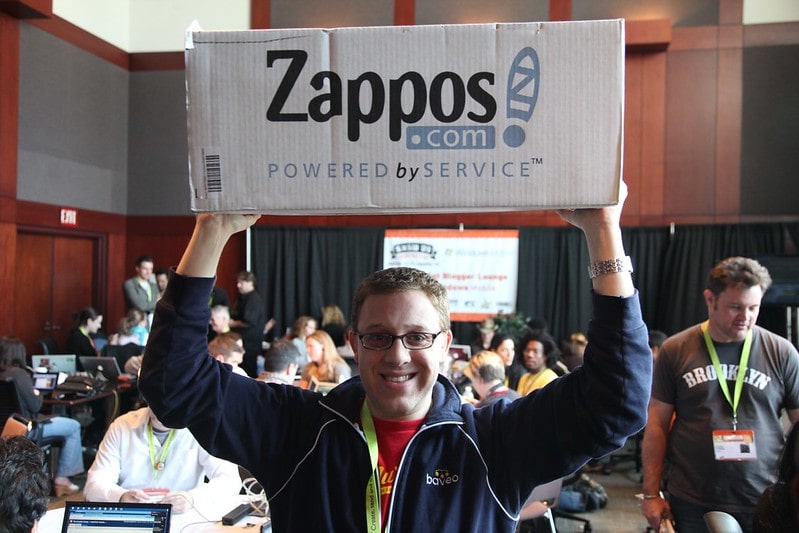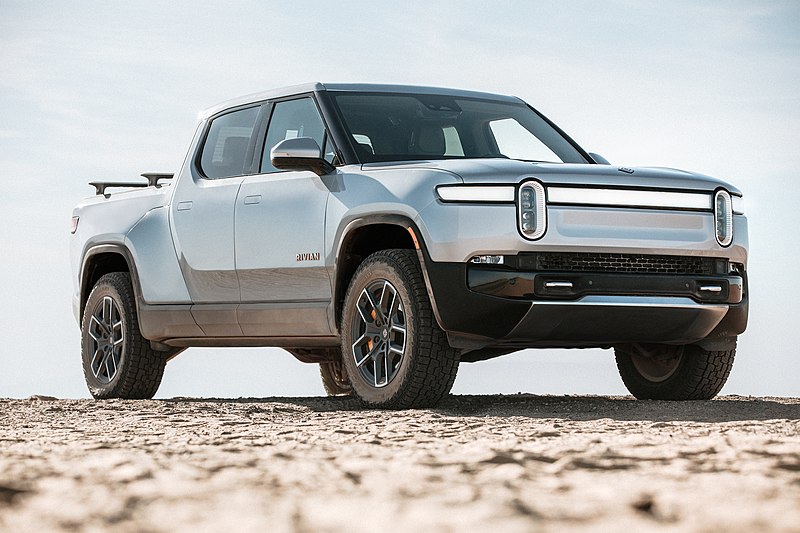In today’s fast-paced, digital world, every business faces a constant challenge: standing out in an increasingly crowded marketplace. As the digital age continues to transform how we interact with consumers, success relies on the ability of businesses to carve out a unique and recognizable brand identity that not only stands out but shines.
With consumers constantly bombarded with overwhelming amounts of marketing messages, capturing their attention and earning their loyalty has become a near-impossible task. With the days of relying solely on product features or pricing long gone, consumers now seek meaningful connections, memorable experiences, and brands that align with their values and aspirations.
Standing out in today’s competitive landscape is about earning trust and building long-term relationships. For a successful brand, it’s about playing the long game. With a strong brand identity, and a clear brand differentiation strategy, businesses can communicate their unique value proposition and build credibility. It helps establish a sense of authenticity and relevance, enabling businesses to connect with their target audience on a deeper level.

It’s busy out there … how are you going to stand out?
In this blog article, we will explore the importance of a strong and cohesive brand identity and brand differentiation and why they are so important for a brand to survive and thrive in today’s saturated markets.
Daring to be different: the concept of brand differentiation
In simple terms, brand differentiation refers to how you set your brand apart from the competition. By creating a unique brand personality, you can establish a distinct position in the minds of consumers, building strong connections and nurturing brand loyalty.
A differentiated brand goes beyond functional benefits and taps into the emotional aspect of consumer decision-making. By creating an emotional connection with your target audience, you can foster trust, loyalty, and a sense of belonging, building the long-term relationships consumers now crave.
A multi-layered process, brand differentiation requires a deep understanding of your target audience – who they are, their values, and what their customer journey looks like. Consumers are emotional beings, and their craving for connection means they look beyond products and services, choosing companies that align with their beliefs and values.
Brands that stand out are also more likely to be noticed, remembered, and recognized. Effective differentiation strategies help create a strong and memorable brand identity, leading to increased brand awareness, trust, and loyalty among consumers.
Here are a few examples of businesses that have stood out from the competition:
Bombas

Yeah, socks are hyper-competitive.
Sock manufacturer Bombas differentiated itself through innovative product features and a compelling brand mission. They recognized that socks, often overlooked as a mundane product, had room for improvement.
Bombas introduced innovative design elements such as extra cushioning, seamless toe closures, and arch support, which enhanced comfort and performance. Bombas created a unique value proposition in the sock market by addressing common pain points and emphasizing quality. Moreover, their brand mission of donating a pair of socks for every pair purchased resonated with socially conscious consumers, further differentiating them from competitors.
Zappos

Use customer satisfaction to stand out.
Online shoe and clothing retailer Zappos decided to be different by placing customer satisfaction at the core of their business model. Zappos has become synonymous with customer service, prioritizing creating memorable experiences and going above and beyond to exceed customer expectations.
Their customer-centric culture is reflected in policies like free and fast shipping, hassle-free returns, and 24/7 customer support. By delivering outstanding service consistently, Zappos has built a loyal customer base and set itself apart from competitors in the crowded e-commerce industry.
Rivian
Electric adventure vehicle manufacturer Rivian set itself apart with its innovative approach to sustainable transportation. They recognized the growing demand for electric vehicles (EVs) and sought to stand out in this emerging market by designing all-electric vehicles that combine advanced technology, performance, and adventure.

Not gonna lie — want one.
Their models feature long-range capabilities, off-road capabilities, and practical storage solutions. Rivian’s focus on blending sustainability with versatility and adventure has garnered significant attention and positioned them as an exciting player in the EV industry.
How a unique brand identity helps in differentiation
A unique brand identity plays a critical role in brand differentiation by enabling businesses to distinguish themselves from competitors. It encompasses the visual, verbal, and experiential elements that collectively shape how a brand is perceived by its target audience.
Brand identity goes beyond visuals; it also encompasses the brand’s voice, style, tone, and messaging. By crafting a unique brand personality, businesses can connect with their audience on an emotional level. This connection fosters a sense of relatability, trust, and loyalty, setting the brand apart from competitors who may lack a distinctive personality or emotional appeal.
A well-crafted and communicated brand identity can shape customers’ perceptions of the brand’s quality, reliability, authenticity, and relevance.
For a great brand identity example, you can’t go past Dollar Shave Club. With its unique combination of humor, convenience and affordability, the Dollar Shave Club completely disrupted the shaving industry and built a loyal, loving fanbase in the process. Using witty and irreverent advertising campaigns, they not only attracted consumers’ attention but also communicated their commitment to offering quality products at a fraction of the price.
Turns out, building that unique brand identity worked beyond being memorable. We know that because Dollar Shave Club used metrics to measure the effectiveness of its brand marketing.
By tracking key performance indicators like customer lifetime value (CLV), and churn rate, they were able to gain a deep understanding of how their brand and marketing efforts were impacting their bottom line. Monitoring and optimizing these metrics continuously could help grow the business and nurture and retain loyal customers.
How to build a unique brand identity

Embrace the oddball.
In today’s crowded marketplace, brand perception means everything. To differentiate your brand from competitors, you need to build a unique brand identity and brand image that connects and resonates with your audience. To develop a brand identity that reflects the uniqueness of your business, you need to follow a deliberate and strategic approach that includes the following key steps:
Define Your Mission and Vision
Great brands stand for something, and it’s what sets them apart. To connect with your audience emotionally, you need to have a clear mission and vision they can buy into.
Your mission and vision statements become the foundation of your brand’s identity and serve as north stars for your business, guiding strategic decisions.
A trailblazer in sustainable and ethical outdoor apparel, Patagonia is the perfect example of a brand that’s success has largely come from its clear mission and vision.
The perfect brand identity example, Patagonia’s mission is to build the best products while causing no unnecessary harm to the planet. They strive to implement sustainable practices, minimize their ecological footprint, and use their business as a force for positive change.
Their vision goes beyond selling clothing, working to inspire and implement solutions to the environmental crisis. By actively engaging in environmental initiatives, supporting grassroots activism, and using their platform to advocate for conservation, Patagonia demonstrates its unwavering dedication to preserving the natural world for generations to come.
To really dig into the company’s perspective (and its original mission, vision, values writ large), check out Yvon Chouinard’s autobiography Some Stories: Lessons from the Edge of Business and Sport. It’s informative, entertaining, and inspiring for those of us running companies and helping companies define their core beliefs.
Identify Your Target Audience
Understanding your audience is crucial for effective branding because it allows you to tailor your efforts to their needs, preferences, and aspirations.
To truly connect with your audience, you need your brand to be relevant and to resonate, and that can only be built when you understand who your audience is, what they want and what they value.
A key component of your brand strategy, use market research to gain insights into your audience, competitors, and the industry in general. Take the time to understand your customers needs, preferences, and pain points. Identify gaps in the market that your brand can fill or areas where you can differentiate yourself.
Over the years we’ve asked our clients for permission to interview a handful of their “most important customers.” During those conversations we learn what our client is doing well (and not well) and what they are looking for when choosing a vendor. That information helps us not only craft a more well-rounded brand persona for the initial work, but helps build our marketing and communications strategy down the line.
Create a Unique Brand Personality
Brand personality refers to the set of human characteristics and traits associated with a brand. It goes beyond the functional attributes of a product or service and represents the brand’s unique persona and the emotions it evokes in consumers.
There are 5 dimensions to brand personality that include:
Sincerity —
This dimension reflects brands perceived as honest, genuine, and down-to-earth. Examples include Dove and The Body Shop.
Excitement —
Brands with an exciting personality are energetic, daring, and innovative. Examples include Red Bull and Nike.
Competence —
Competent brands are reliable, trustworthy, and competent in their field. Examples include Microsoft and IBM.
Sophistication —
Sophisticated brands are perceived as elegant, refined, and cultured. Examples include Rolex and Chanel.
Ruggedness —
Brands with a rugged personality are seen as tough, strong, and adventurous. Examples include Harley-Davidson and Jeep.
These dimensions provide a framework for understanding and communicating a brand’s personality.
A well-defined brand personality helps shape consumer perceptions, build emotional connections, and differentiate the brand from competitors. To create one, it’s important to align with the values of your audience and equally important to be consistent in your brand’s delivery across all platforms.
One way that we’ve helped a company define themselves is by showing them different examples of shoes. It’s fascinating to watch people explain why they’re more open-toe sandal than high-heel.
Design a Distinctive Visual Identity
Visual elements play a crucial role in brand identity as they drive recognition, convey your brand’s personality, and connect with your audience on an emotional Level.
Your visual identity goes beyond just your brand’s logo, including color palettes, typography, and imagery that all work together to create a visual language that communicates your brand values and sets you apart from your competitors.
Strong visual elements that are consistent across all touchpoints can enhance brand recall, foster trust, and influence decision-making by evoking an emotional response.
Case Study: Everi
We pulled all these levers while helping a Fortune 500 company rebrand during a tense corporate melding of cultures and experiences.
One of the first things we learned in a conference room in Austin, Texas is that accountants and game designers didn’t agree on a lot! Ha.
The assignment included renaming and branding, building design and video assets, launching a custom-built website with an enormous catalog of material and information, and building a strategy to help the company keep moving once we handed over the assets.
The company is now known as Everi is the combination of Global Cash Access (the accountants) and Multimedia Games (the designers). Our charge was to build something that would explain to the marketplace what made this combined company a good decision while uniting the internal teams.
It was a HUGE challenge, made easier (and more fun) by the company’s CMO Linda Trinh and her partner in crime Julia Kelly.
Both Global Cash Access and Multimedia Games were operating in hyper-competitive spaces, trying to attract the attention of people walking through casinos. When did you walk through a casino last? Yeah, it’s busy.
One of our first steps was stacking up the company’s competition and looking at their visual similarities and investigating opportunities to stand out. It didn’t take long to notice that just about every other company had a red, white, and blue color palette. We’re as pro-USA as the next agency, but, whew, that was rough.
Beyond colors, the similarities of logo shapes, swoops, and sizes became apparent. It was as if they all went to the same Fiverr designer and said, ‘Like that one.’
We’re up for a longer talk about this project, but this post is getting long.
What became clear — and what we know from our past experiences — is that marketplace commonalities offer opportunities for distinction.
We avoided the red, white, and blue color palette. We avoided the obvious logo marks. (Who really needs to see another poker chip on a casino floor?)
We elected to leverage the feeling of royalty and strength in our color and logo. Plus, and we’ll get to this in another blog post soon, we hinted at the combination of payments (Global Cash Access) and slot machine games (Multimedia Games) in the shape of our logo.
You can read more about that project and see some of the work on our Portfolio page.
Maintaining and evolving your brand identity over time
Your brand isn’t a set-it-and-forget part of your business. It’s a fluid and flexible asset that should be constantly evolving. Why? Because your audience and your market are constantly changing, and if you don’t change with it, you’ll quickly be forgotten.
Regular brand audits are vital for maintaining a strong and relevant brand identity. Regularly auditing your brand lets you see how you’re performing and uncover opportunities to improve. Some key considerations include:
- Regularly tracking key performance metrics
- Keeping up with the latest trends
- Listening to customer feedback
- Tracking brand perceptions
- Regularly revisiting your brand’s mission and vision
Does your brand stand out?
With the power of differentiation driving the success of leading brands, is it time you evaluated your own brand identity?
Start by asking yourself some simple questions:
Is your brand’s personality unique and is your brand voice your own?
How well do you know your target market and does your mission and vision align with what’s most important to them?
Do you have a unique brand personality and distinctive visual identity?
With brand differentiation becoming increasingly powerful in today’s competitive landscape, investing in all your brand elements is setting your business up for success now and in the future.
Whether you’re looking to develop a unique brand identity, or add to your already strong brand to better connect with your audience and foster brand loyalty, the expert team at Farinella can help. Successfully launching brands for over 30 years, we can help define who you are and connect with your customers on a whole new level.
If you’re ready, so are we. Contact us for a chat.
